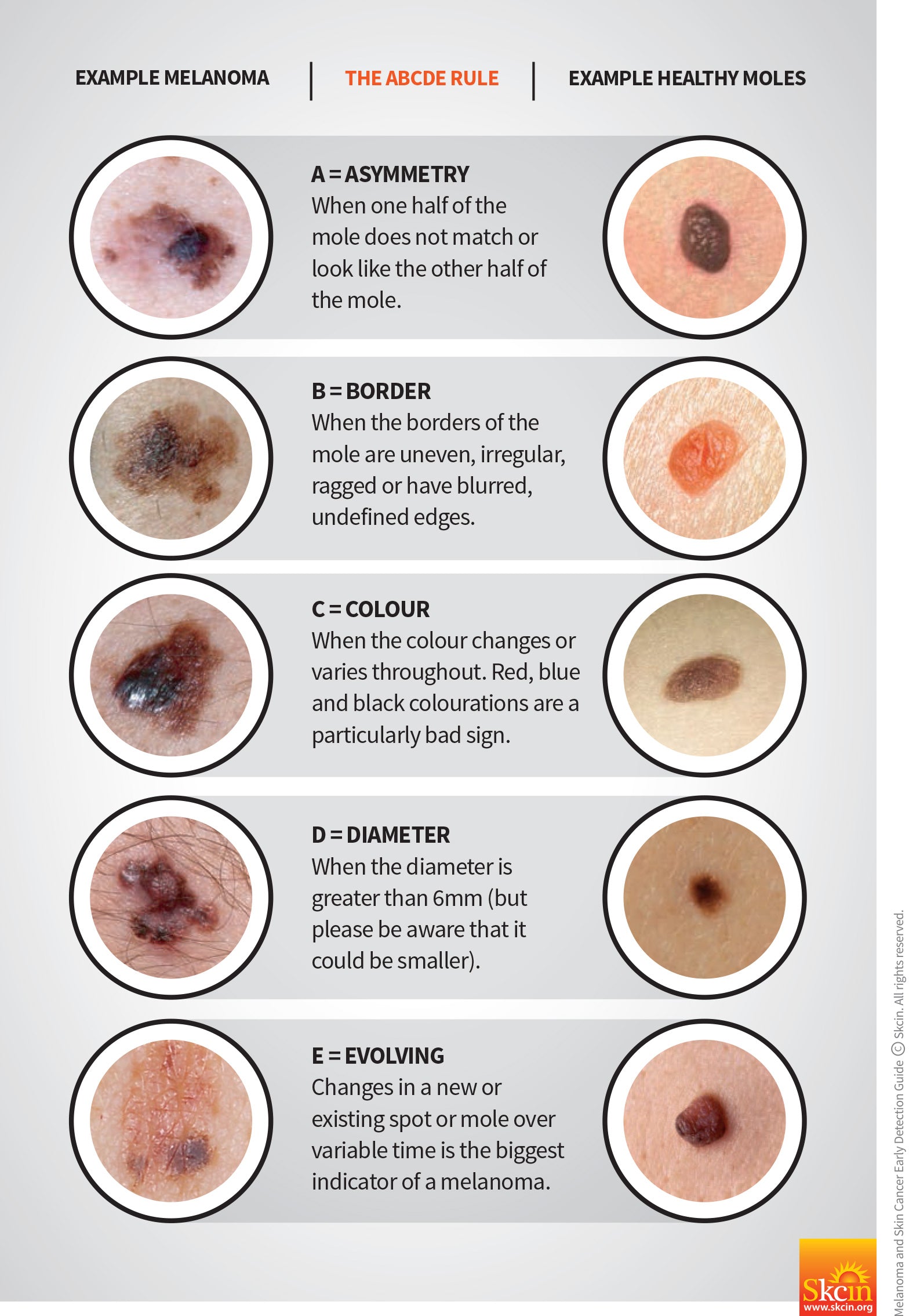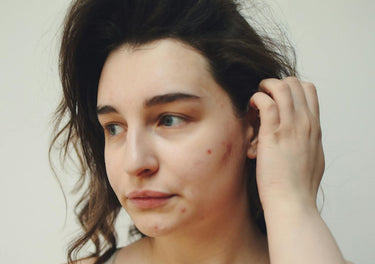Skin Cancer: Early Detection

Whether it is your hairdresser, aesthetician or even a makeup artist; when these professionals are spending a lot of time close to your skin & scalp, you may not have considered that they are in a position to potentially save your life!
May is Skin Cancer Awareness Month. At Face the Future, we take our patients' health extremely seriously, which is why we recently put all our clinicians through a skin cancer detection programme. The MASCED (Melanoma And Skin Cancer Early Detection) accreditation programme has been developed by the national melanoma and skin cancer charity, SKCIN. The objective of the scheme is to significantly raise awareness of the early signs and symptoms of skin cancer, promote the early detection of melanoma, to improve prognosis, and save lives.
Melanoma & skin cancer is unfortunately at an ever-growing rate and spotting suspicious lesions is becoming a regular occurrence in our day-to-day clinic.
Skin cancer diagnosis is on the rise and last year over 130,000 cases of non-melanoma skin cancer were diagnosed in the UK alone, making it the most common type of cancer by far. However, because these types of skin cancer are generally easy to treat and cure, they therefore tend to be under-reported and left out of national cancer statistics, meaning the number is likely to be significantly greater.
Over the last decade, melanoma skin cancer incidence rates have increased by almost half (45%) in the UK. 1 in 54 people will be diagnosed with malignant melanoma during their lifetime.
UV and skin cancer
Skin cancer is the biggest killer in 18-34 year olds, but 80% of cases are preventable.
UV radiation is a known carcinogen and almost all melanoma and skin cancers are caused by overexposure to the UV rays from the sun or sunbeds. Damage is cumulative, irreparable, and increases with each exposure.
The sun emits three types of UV rays - UVA, UVB, and UVC. UVC rays are blocked by the ozone layer, whilst UVA and UVB penetrate our skin. UVB rays reach the outer layer of the skin - they are known as 'burning rays' and are the primary cause of sunburn and skin cancer. UVA rays penetrate the middle layer of the skin, and they also contribute to skin burning and skin cancer and are responsible for premature ageing.
Sunburn, reddening, peeling, and even tanning of the skin is a clear indication of sun damage. When we burn, the superficial layers of the skin release chemicals that cause the blood vessels to expand and leak fluid, causing swelling, pain, and redness. Without sun protection, UV radiation starts to penetrate deep into the layers of the skin, causing damage to the skin cells. Once the tan fades the damage remains, which can result in serious consequences over time.

Early detection
Early detection is key to identifying and treating the cancer. The quicker the diagnosis, the better the chance of avoiding surgery, disfigurement, and even a life-threatening outcome. Skin cancer is often seen rather than felt which means learning how to identify indications is vital.
Skin cancer can be divided into two main groups: Non-Melanoma Skin Cancer and Melanoma. The two most common types of skin cancers are non-melanoma skin cancers called 'Basal Cell Carcinoma' and 'Squamous Cell Carcinoma.' Whilst cases of melanoma are significantly less than non-melanoma skin cancers - melanoma is the deadliest form of the disease and early detection is vital for survival. Melanoma can quickly spread to form new cancers around the body.
Basal Cell Carcinoma
Basal Cell Carcinoma (BCC) is the most common type of skin cancer. The majority of instances occur on sun-exposed areas i.e. the head, face, neck, and ears. They are slow-growing and rarely spread anywhere else on the body. They can appear in different sizes and shapes.
Large or neglected BCC's can cause extensive local invasion and disfigurement.
Signs and Symptoms of a Basal Cell Carcinoma
- A persistent, non-healing sore is a very common sign of an early BCC. Look out for an open sore that bleeds, oozes, or crusts. It can remain open for a few weeks, only to heal, then open up and bleed again.
- A pearly, shiny bump or nodule, sometimes clear and, often pink, red, or white. The bump can also be tan, black, or brown, especially in dark-haired people, and can be confused with a normal mole.
- A pink growth with a rolled, slightly elevated border and an indentation in the centre. As the growth enlarges, tiny blood vessels may develop on the surface.
- A patch of reddish irritated skin, that frequently occurs on the face, chest, shoulders, arms, or legs. Sometimes the patch may crust. It may also itch or hurt. At other times, it persists with no discomfort.
- A white, yellow, or waxy scar-like area that often has poorly defined borders whilst the skin itself appears taut. This warning sign may indicate the presence of an invasive BCC that could be much larger than it appears on the surface.
Squamous Cell Carcinoma
Squamous Cell Carcinoma (SCC) is the second most common type of skin cancer. The majority occur on sun-exposed areas i.e. the face, neck, ears, lips, and forearms.
SCCs can appear in different sizes and shapes and grow at variable rates with varied appearance. They rarely spread, but if left untreated will increase in size and can spread throughout the body. They can cause discomfort, become disfiguring, and in rare cases, can become life-threatening.
Signs and Symptoms of a Squamous Cell Carcinoma
Squamous Cell Carcinoma typically appear as persistent, thick, rough, scaly patches that can bleed if bumped, scratched, or scraped. They often look like warts and sometimes appear as open sores with a raised border and a crusted surface that can be painful.
- Small, hard white, or skin-coloured lumps - SCCs often first appear on the skin like this.
- A persistent, scaly red patch with irregular borders that can sometimes crust or bleed.
- An elevated growth with a central depression that occasionally bleeds - a growth of this type may rapidly increase in size.
- An open sore that bleeds and crusts - sores like this can persist for weeks.
- A wart-like growth that crusts and occasionally bleeds.
Malignant Melanoma
Melanoma most commonly appears as a new spot or mole, or an existing spot or mole that changes in colour, size, or shape. However, it is important to acknowledge that melanoma can differ considerably in size, shape, and colour.
The 'ABCDE of Melanoma*' is a common screening tool used to compare the characteristics of normal moles versus melanoma. These photographs show examples of melanoma and should help you to recognise what is not normal. However, not all melanoma looks like this and some may be very small.

Image source: masced.uk *Please note the image is to be used as a guideline only.
A = ASYMMETRY
When one half of the mole does not match or look like the other half of the mole.
B = BORDERWhen the borders of the mole are uneven, irregular, ragged, or have blurred, undefined edges.
C = COLOURWhen the colour changes or varies throughout. Red, blue, and black colourations are a particularly bad sign.
D = DIAMETERWhen the diameter is greater than 6mm (but please be aware that it could be smaller).
E = EVOLVINGChanges in a new or existing spot or mole over variable time are the biggest indicator of melanoma. Whilst this is a good starting point for checking suspicious moles, it's important to remember that not all cancers follow these rules and at the same time not all lesions with these characteristics will be malignant.
Vigilance is key for successful treatment and whilst we will always do our best to monitor changes in your skin, it's important to stress we are not medically trained to diagnose cancer.
It's important to check your skin daily and do a thorough body check at least once a month. If there is anything that you are unsure about, always go and see your GP. Remember that not all GPs have experience in detecting such lesions and it is your right as a patient to ask for a referral to a dermatologist or specialised plastic surgeon if you are in any doubt.
Follow our clinician's top tips for lowering your risk:
- Avoid UV exposure between 11-3 pm in summer and hot climates
- Wear an SPF daily and reapply every two hours when UV levels are high
- Cover sun-exposed areas like the scalp, face, and shoulders with clothing such as hats and shawls
- Avoid the use of sunbeds
- Don't apply tanning agents such as tanning oil which encourage the burning of the skin
Feeling knowledgeable about detecting the early signs of skin cancer? Stick around longer and discover The Best Heliocare Products To Take On Holiday
To learn more about our clinic, the treatments we offer, and our FREE consultations, head to our website or call 0113 282 3300.
Written for you by: Emily, Face the Future
Image source: freepik.com



























































